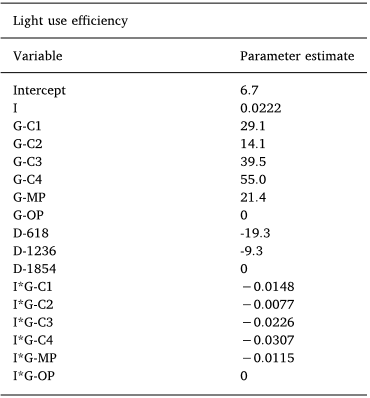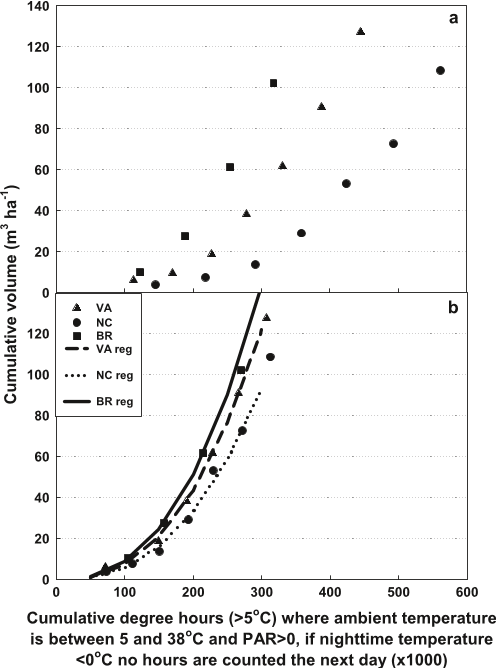Abstract:
Rising demand for renewable energy has created a potential market for biomass from short-rotation pine plantations in the southeastern United States. Site preparation, competition control, fertilization, and enhanced seedling genotypes offer the landowner several variables for managing productivity, but their combined effects on financial returns are unclear. This study estimated returns from a hypothetical 10-year biomass harvest in loblolly pine plantation using field studies in the Coastal Plain of North Carolina and the Virginia Piedmont testing combinations of tree genotype, planting density, and silviculture. Although enhanced varietal genotypes could yield more biomass, open-pollinated seedlings at 1,236–1,853 trees ha−1 under operational silviculture had the greatest returns at both sites, with mean whole-tree internal rates of return of 8.3%–9.9% assuming stumpage equal to current pulpwood prices. At a 5% discount rate, break-even whole-tree stumpage at the two sites in the optimal treatments was $8.72–$9.92 Mg−1, and break-even yield was 175–177 Mg ha−1 (roughly 18 Mg ha−1 yr−1 productivity), although stumpage and yield floors were higher if only stem biomass was treated as salable. Dedicated short-rotation loblolly biomass plantations in the region are more likely to be financially attractive when site establishment and maintenance costs are minimized.
Study Implications: Our study suggests that dedicated loblolly pine plantations in the US Southeast may be managed to generate positive financial yields for biomass over relatively short (10 year) rotation windows, even at lower stumpage value than at present for pulpwood in the region (<80% current). Intensive use of costly inputs like fertilizer, vigorous chemical competition control, and elite genetics in planting stock did improve biomass yields. However, the management combinations that favored the highest financial returns emphasized the least expensive open-pollinated stock, lower-input operational silviculture, and moderate-to-high planting density.







